In the depths of our world’s forests lie secrets that stir the imagination and send shivers down our spines. Haunted forests, steeped in myth, legend, and eerie tales, have long captured the fascination of those drawn to the supernatural and the unknown. From Japan’s Aokigahara Forest to England’s Epping Forest, and beyond, these enigmatic woodlands hold stories of ghosts, mysterious disappearances, and unexplained phenomena. Join us on a journey as we unveil the mysteries of haunted forests across the globe.
Aokigahara Forest, Japan: The Haunted Silence
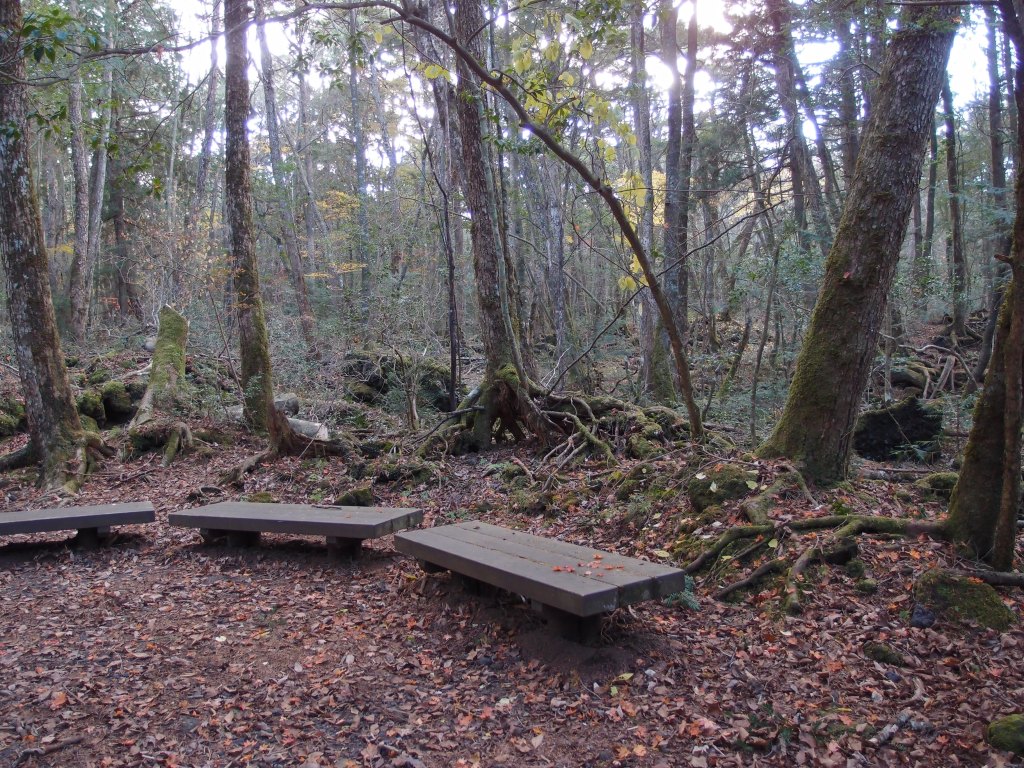
Our exploration begins in Japan, where the Aokigahara Forest stands as a haunting symbol of tragedy and mystery. Nestled at the northwest base of Mount Fuji, Aokigahara is a vast expanse of dense trees and quiet paths, often shrouded in an eerie silence that is both mesmerizing and unsettling. Known colloquially as the Suicide Forest, Aokigahara has gained notoriety as a site where individuals tragically end their lives. This reputation, while deeply tragic, is not the only aspect that makes Aokigahara so hauntingly fascinating.
Aokigahara’s macabre association with suicide dates back to the 1950s, and it is estimated that hundreds of people have taken their lives within its boundaries. Signs at the forest’s entrance urge visitors to think of their families and contact a suicide prevention hotline. Despite efforts to deter such tragedies, Aokigahara’s dark allure persists, drawing those seeking solitude and an escape from their struggles. The forest’s thick canopy blocks out much of the sunlight, creating an atmosphere that feels otherworldly and oppressive. The lava-covered forest floor, formed from Mount Fuji’s ancient eruptions, further adds to the forest’s mystique, with its uneven terrain and gnarled tree roots.
Beyond its tragic reputation, Aokigahara is steeped in folklore and supernatural tales that date back centuries. According to Japanese mythology, the forest is home to yurei, or restless spirits of the dead. These ghosts are said to be individuals who died with strong emotions of anger, sadness, or hatred, and their spirits are believed to be trapped between this world and the next. Visitors to Aokigahara often report hearing unsettling whispers and feeling an inexplicable presence among the trees. These tales of yurei roaming the forest’s depths add an extra layer of eeriness to an already somber location.
The unique geography of Aokigahara also plays a role in its haunted reputation. The dense forest is easy to get lost in, with compasses and GPS devices often malfunctioning due to the rich deposits of magnetic iron in the volcanic soil. This disorientation can evoke feelings of being watched or followed, heightening the sense of unease for those who venture deep into the forest.
The haunting beauty of Aokigahara, with its serene yet sinister ambiance, continues to captivate and terrify in equal measure. While it remains a place of deep sorrow and tragedy, it is also a testament to the powerful and enduring impact of folklore and the human imagination. The whispers of yurei carried on the wind and the silent paths of Aokigahara remind us of the delicate balance between life and death, and the mysterious forces that lie just beyond our understanding.
Hoia Baciu Forest, Romania: The Bermuda Triangle of Transylvania
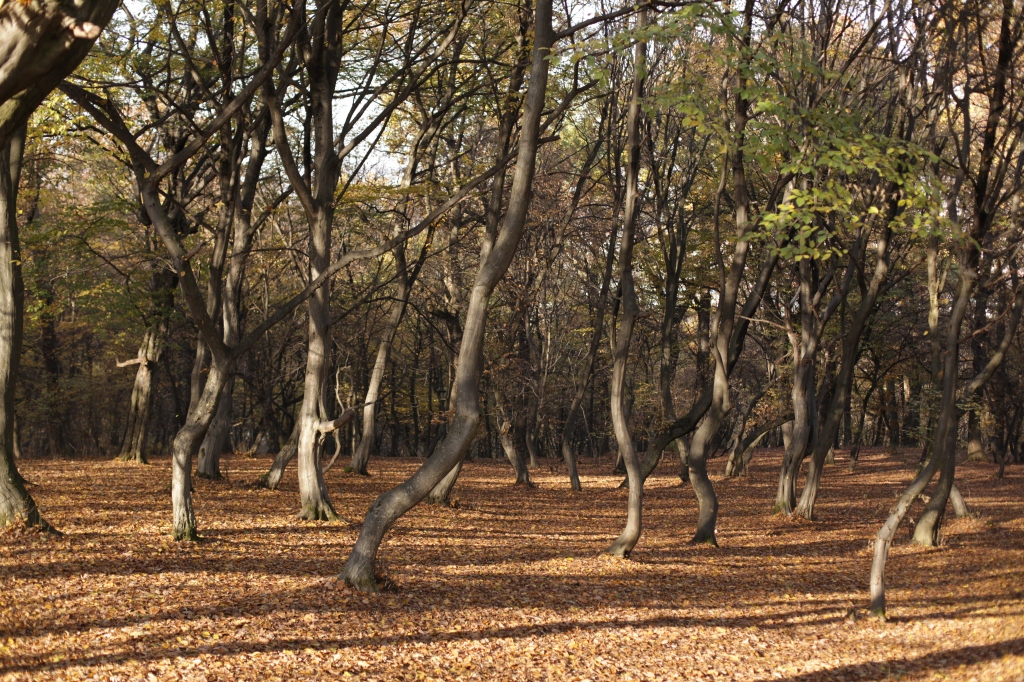
Venturing into Europe, we encounter the enigmatic Hoia Baciu Forest in Romania, often dubbed the Bermuda Triangle of Transylvania. Nestled near the city of Cluj-Napoca, this mysterious woodland has garnered a chilling reputation for its intense paranormal activity. The forest, covering approximately 295 hectares, is known for a variety of unexplained phenomena, including UFO sightings, unexplained energy fields, and eerie encounters that defy rational explanation.
The forest gained international attention in the 1960s when a biologist named Alexandru Sift captured photographs of a disc-shaped object hovering in the sky above the forest. Since then, numerous reports of unidentified flying objects have emerged, solidifying Hoia Baciu’s status as a hotspot for UFO enthusiasts. These sightings often involve strange lights and shapes that move in erratic patterns, disappearing and reappearing without warning.
In addition to UFO sightings, the forest is notorious for its unexplained energy fields. Visitors frequently report malfunctioning electronic devices and compasses spinning wildly out of control. These disruptions are often attributed to the forest’s high levels of natural magnetism, though the precise cause remains a topic of debate among scientists and paranormal researchers alike. The feeling of disorientation is compounded by the forest’s twisted, gnarled trees, which some say resemble the tortured spirits said to inhabit the area.
Hoia Baciu is also famous for inducing intense feelings of unease and anxiety in those who venture into its depths. Many visitors describe the sensation of being watched by unseen eyes, a pervasive sense of dread that only intensifies the deeper one goes. The forest’s thick canopy and unusual silence add to its eerie ambiance, creating an environment where the boundary between reality and the supernatural feels particularly thin.
Legends surrounding Hoia Baciu are plentiful and varied. One of the most enduring tales is that of a shepherd who disappeared into the forest with his flock of two hundred sheep, never to be seen again. This story is often cited as evidence of the forest’s ability to swallow people whole, trapping their souls within its boundaries. Other legends speak of ghostly apparitions, shadowy figures that flit between the trees, and encounters with glowing orbs that hover just out of reach.
The most famous of these legends involves a clearing in the forest where nothing grows, known as the “dead zone.” This circular area, devoid of vegetation, has baffled scientists and paranormal investigators alike. Soil samples from the clearing have revealed no clear reason for the lack of plant life, leading to speculation that the area is a portal to another dimension or a site of intense paranormal activity. Visitors to the dead zone often report feelings of nausea, dizziness, and a sense of being pulled toward the center of the clearing by an unseen force.
Despite its reputation, Hoia Baciu Forest continues to attract those seeking to experience the paranormal firsthand. It stands as a testament to the enduring power of folklore and the human fascination with the unknown. Whether driven by curiosity, a desire for adventure, or a genuine belief in the supernatural, those who enter Hoia Baciu are bound to leave with stories that blur the line between reality and the otherworldly. The Bermuda Triangle of Transylvania remains one of the most compelling and mysterious destinations for those seeking to explore the darker side of our world
Black Forest, Germany: Where Fairy Tales Meet Dark Legends

In Germany’s Black Forest, a realm where fairy tales intertwine with darker legends, our journey takes a haunting turn. This vast expanse of dense woodlands, covering more than 6,000 square kilometers in the southwestern part of the country, is a place where enchanting landscapes meet the shadows of ancient folklore. Known for its thick canopy of evergreens, the Black Forest is a place where reality blurs with myth, and every rustle of leaves seems to whisper a tale from a bygone era.
The Black Forest has long been a source of inspiration for countless stories and legends, many of which have found their way into the fabric of German folklore. This is the land of the Brothers Grimm, whose tales of witches, wolves, and haunted woods were often set against the backdrop of this eerie forest. One of the most famous stories, “Hansel and Gretel,” tells of children lost in the forest, lured by a witch who dwells in a house made of candy. This and other tales have cemented the Black Forest’s reputation as a place of both wonder and fear.
Witches are perhaps the most iconic figures associated with the Black Forest. According to legend, these sorceresses would gather in hidden clearings deep within the woods to perform their dark rituals. Walpurgisnacht, celebrated on the night of April 30th, is said to be a time when witches from all over Germany converge on the highest peak of the Black Forest, the Feldberg, to hold their sabbath. The mountain itself is shrouded in myths and legends, with tales of spectral huntsmen and enchanted creatures adding to its mystique.
The Black Forest is also home to legends of werewolves. These shape-shifting creatures are said to roam the forest under the cover of darkness, transforming from men into wolves to hunt their prey. Such stories likely have roots in the medieval period, when fear of the supernatural was widespread, and unexplained phenomena were often attributed to the work of werewolves and other mythical beings. Today, the legend of the werewolf continues to capture the imagination, contributing to the eerie reputation of the forest.
Wandering spirits and ghostly apparitions are another integral part of the Black Forest’s lore. One such tale is that of the “White Lady,” a spectral figure dressed in white who is said to haunt the ruins of old castles scattered throughout the forest. According to legend, she was a noblewoman who met a tragic end and now wanders the forest seeking vengeance or redemption. Sightings of the White Lady are rare, but those who claim to have seen her speak of a chilling presence that sends shivers down the spine.
Deep within the shadows of the Black Forest, echoes of ancient rituals and mysterious rites linger, adding to the forest’s allure. Archeological findings suggest that the forest was a site of pagan worship long before the advent of Christianity. Stone circles, burial mounds, and other ancient structures hint at a time when the forest was revered as a sacred place, a connection to the spiritual world. These remnants of the past continue to fascinate and intrigue, drawing historians, archaeologists, and paranormal enthusiasts alike.
The Black Forest’s enchanting landscapes, with their dark, dense foliage and mist-covered valleys, create an atmosphere that is both beautiful and foreboding. Whether it’s the towering pines that block out the sunlight, the hidden waterfalls that suddenly appear as if by magic, or the winding paths that seem to lead into another world, the Black Forest is a place where nature and legend are inextricably linked. It is a realm where fairy tales come to life and dark legends whisper from the shadows, inviting the brave to uncover its many secrets.
Ballyboley Forest, Northern Ireland: A Realm of Spectral Intrigue
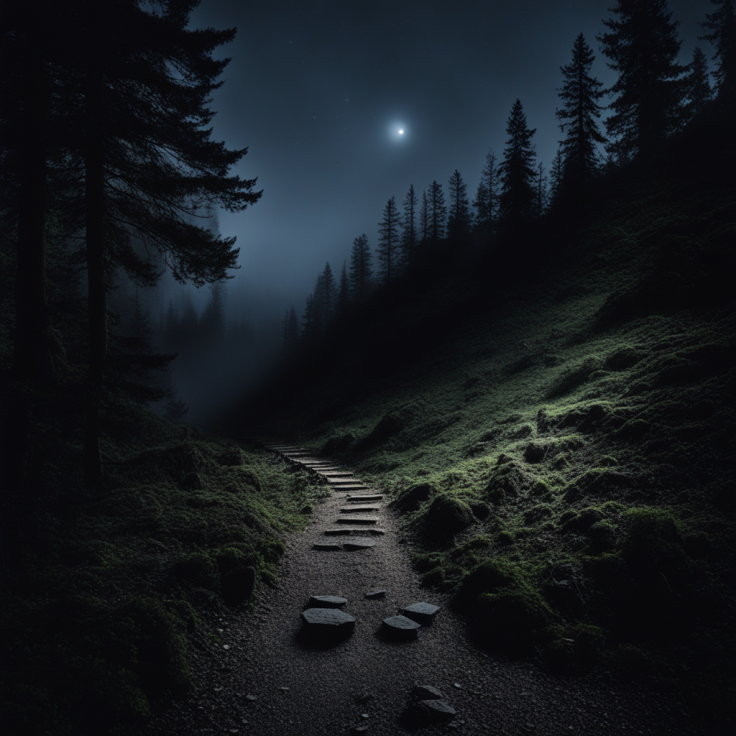
Crossing the sea to Northern Ireland, we enter Ballyboley Forest, a realm steeped in spectral intrigue. Nestled in County Antrim, Ballyboley Forest is a place where the line between folklore and reality blurs, creating an atmosphere thick with mystery and unease. This ancient woodland, with its dense trees and shadowy paths, has long been the subject of chilling legends and paranormal activity, drawing those curious about the supernatural.
One of the most enduring tales associated with Ballyboley Forest is that of the spectral dog. This ghostly canine is said to prowl the forest at night, its eyes glowing with an otherworldly light. Witnesses have described the dog as a large, black creature that appears and disappears without a trace, often accompanied by an eerie silence that falls over the forest. Some believe the dog is a harbinger of doom, while others see it as a guardian of the forest’s secrets. The spectral dog adds a layer of fear and fascination, making Ballyboley a prime location for ghost hunters and thrill-seekers.
Another common phenomenon reported in Ballyboley Forest is the presence of strange lights that dance among the trees. These lights, often described as orbs or flickering flames, move erratically through the forest, defying any logical explanation. Some speculate that the lights are the spirits of those who have died in the forest, while others believe they are manifestations of ancient rituals performed by Druids or other early inhabitants of the region. Regardless of their origin, the lights contribute to the forest’s eerie reputation, creating a sense of being watched by unseen eyes.
Visitors to Ballyboley often report strange sensations and unexplained phenomena. Some feel an overwhelming sense of dread or anxiety, while others experience sudden drops in temperature or hear disembodied voices whispering in the darkness. These experiences have led many to believe that the forest is a portal between the living and the dead, a place where spirits linger and interact with the living. The dense foliage and winding paths only add to the feeling of disorientation, making it easy to get lost and heightening the sense of being trapped in a haunted realm.
Adding to the forest’s mystique are tales of disappearances and unexplained deaths. Historical records mention several instances where people have vanished without a trace after entering Ballyboley Forest. In some cases, only their belongings were found, scattered among the trees as if they had been spirited away. These stories have fueled speculation about the forest’s true nature, with some believing that it is cursed or that it harbors dark, supernatural forces.
The blending of folklore and reality in Ballyboley Forest weaves a tapestry of haunting tales that continue to captivate and terrify. Whether it’s the spectral dog that prowls the night, the eerie lights that dance among the trees, or the strange sensations that visitors experience, Ballyboley Forest stands as a testament to the enduring power of the supernatural in our collective imagination. For those brave enough to explore its depths, the forest offers a glimpse into a world where the boundaries between the known and the unknown are tantalizingly thin.
Epping Forest, England: Where History and Hauntings Collide
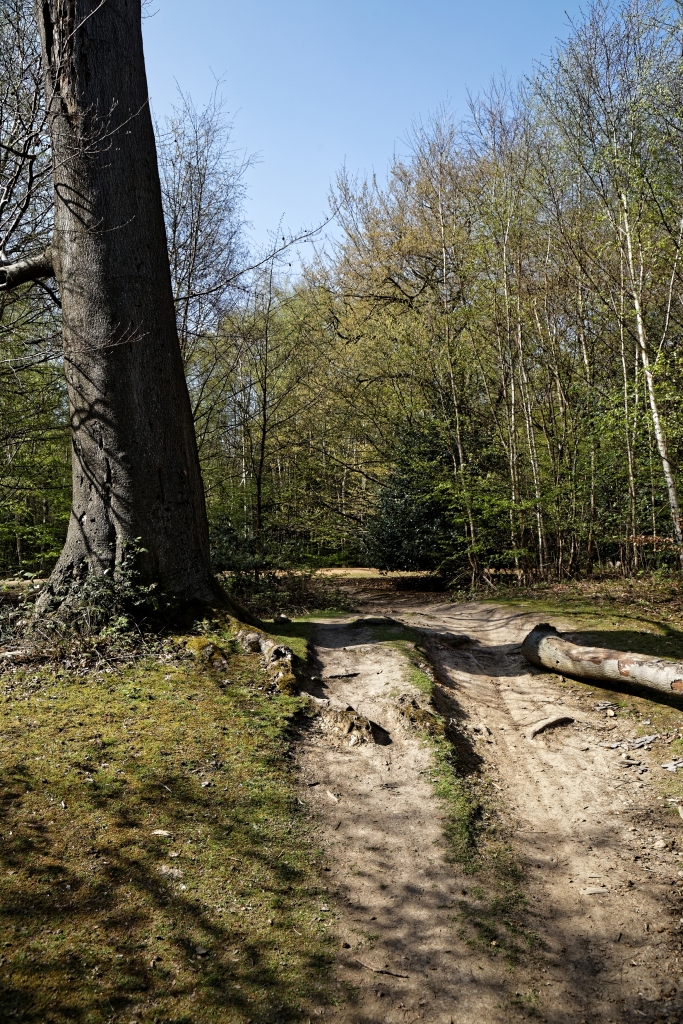
In the heart of England, Epping Forest stands as a testament to the intertwining of history and hauntings. Spanning nearly 6,000 acres across Greater London and Essex, this ancient woodland has a rich past that stretches back centuries, making it a place where stories of the past come alive with spectral intrigue. Epping Forest’s dense foliage, winding paths, and historical significance create a perfect backdrop for tales of ghostly apparitions and eerie phenomena that captivate the imagination.
One of the most famous legends associated with Epping Forest is that of Dick Turpin, the notorious 18th-century highwayman. Turpin was known for his daring robberies and violent escapades, often targeting wealthy travelers along England’s roads. According to legend, Turpin used Epping Forest as a hideout, taking advantage of its dense cover to evade capture. Despite his eventual arrest and execution, his spirit is said to still roam the forest’s paths. Sightings of a ghostly rider on a black horse, believed to be Turpin himself, are frequently reported, with many describing the chilling experience of hearing phantom hoofbeats echoing through the trees.
Epping Forest’s reputation as a haunted location extends beyond the legend of Dick Turpin. Visitors and locals alike have reported encounters with various spectral figures, from shadowy apparitions to ethereal women dressed in white. These ghostly sightings often occur near historical landmarks within the forest, such as the Queen Elizabeth’s Hunting Lodge and the Ambresbury Banks, an Iron Age hill fort. The presence of these ancient structures adds to the sense of history that permeates the forest, creating an atmosphere where the past feels ever-present.
The forest is also known for its eerie phenomena, including strange lights and sounds that defy explanation. Many who venture into Epping Forest at night describe the sensation of being watched or followed, as if unseen eyes are observing their every move. Some have heard disembodied voices whispering in the darkness, while others have experienced sudden drops in temperature, often associated with the presence of spirits. These phenomena contribute to the forest’s haunting allure, drawing paranormal investigators and thrill-seekers eager to uncover its secrets.
Adding to Epping Forest’s mystique are the numerous tales of tragic events that have occurred within its boundaries. From unsolved murders to mysterious disappearances, the forest has been the backdrop for countless dark stories over the centuries. One such tale is that of the “ghost of the Hangman’s Hill,” where a group of executed criminals are said to haunt the area, their restless spirits unable to find peace. Visitors to this site report feeling an overwhelming sense of dread and unease, as if the lingering sorrow and anger of these lost souls are palpable.
Epping Forest’s dense, sprawling landscape plays a significant role in its haunted reputation. The forest’s thick canopy and twisting paths can easily disorient even the most experienced hikers, making it easy to believe that spirits and otherworldly beings could be lurking just beyond the next bend. The ancient oak and beech trees, some of which are believed to be over a thousand years old, stand as silent witnesses to the forest’s long and storied past.
Epping Forest is a place where history and hauntings collide, creating a captivating and eerie atmosphere that continues to fascinate and terrify. Whether it’s the ghostly figure of Dick Turpin, the spectral riders, or the unexplained phenomena that visitors encounter, Epping Forest offers a unique glimpse into a world where the past reaches out to touch the present. For those brave enough to explore its depths, the forest promises an unforgettable journey into the heart of England’s haunted heritage
Poveglia Island, Italy: A Haunting Haven of Desolation
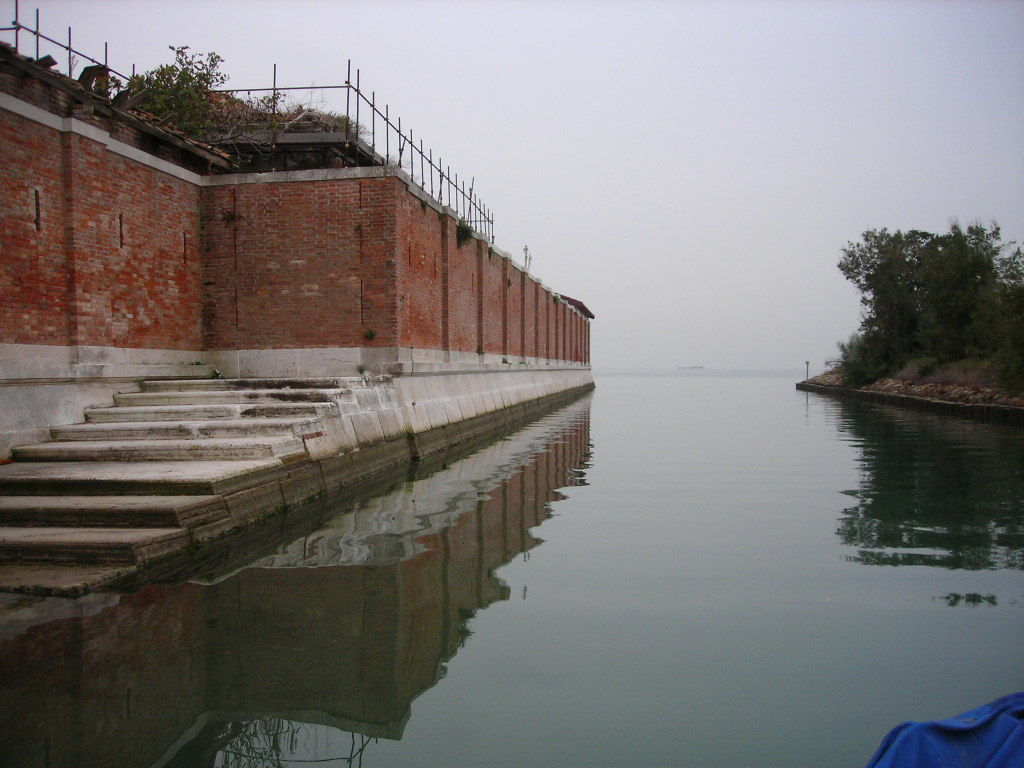
Turning our gaze to Italy, we encounter Poveglia Island, a place steeped in darkness and despair. While not a forest in the traditional sense, Poveglia’s abandoned ruins and haunted history make it a haunting haven of desolation. Situated in the Venetian Lagoon, this small island has earned a reputation as one of the most haunted places in the world, its history marked by tragedy, suffering, and death. The island’s eerie atmosphere and sinister past continue to captivate those fascinated by the macabre.
Poveglia’s dark history begins in the 14th century when the Bubonic Plague ravaged Europe. In an effort to control the spread of the disease, Venice used Poveglia as a quarantine station for plague victims. Thousands of people, many already showing symptoms, were forcibly taken to the island and left to die. Mass graves were dug, and the bodies were burned in an attempt to halt the epidemic. The screams and cries of the dying were said to echo across the lagoon, creating a lasting aura of despair that still haunts the island.
The island’s tragic role did not end with the plague. In the 18th century, it was used again as a quarantine station during subsequent outbreaks of disease. The suffering of those isolated on Poveglia only added to the island’s growing reputation as a place of horror and death. By the late 1800s, Poveglia had become synonymous with disease and despair, a place where the sick were abandoned to their fate, far from the eyes of the living.
In the 20th century, Poveglia’s history took another dark turn when it was transformed into a mental asylum. The asylum, which operated from 1922 until 1968, is said to have been the site of numerous cruel and inhumane treatments. Patients were reportedly subjected to experimental procedures, including lobotomies, conducted by a sadistic doctor who later went mad and jumped to his death from the bell tower. The stories of abuse and torment during the asylum’s operation have only deepened the island’s haunted reputation.
Visitors to Poveglia today report a palpable sense of unease and dread. The island’s abandoned buildings, overgrown paths, and crumbling infrastructure create an atmosphere of decay and desolation. Many who have explored the island speak of hearing disembodied voices, whispers in the dark, and sudden, unexplained cold spots. Shadows flit among the ruins, and some claim to have seen ghostly figures moving through the trees and along the dilapidated corridors.
Legends speak of the tormented spirits of plague victims and asylum patients lingering among the ruins. These restless souls are said to be unable to find peace, their suffering and sorrow echoing through the ages. The bell tower, a prominent feature on the island, is often cited as a hotspot for paranormal activity. The sound of the bell ringing, despite being long removed, is occasionally heard, adding to the island’s eerie mystique.
Despite its haunted reputation, Poveglia Island remains off-limits to the general public. The Italian government has placed strict restrictions on access, citing safety concerns due to the dilapidated state of the buildings. However, this has not deterred the most determined paranormal investigators and thrill-seekers from attempting to explore its haunted grounds, drawn by the island’s dark allure and the promise of encountering the supernatural.
Poveglia Island stands as a haunting haven of desolation, its history marked by plague, suffering, and madness. The lingering presence of tormented spirits, the island’s eerie atmosphere, and its tragic past create a place where suffering and sorrow resonate through time. For those intrigued by the macabre, Poveglia remains an enduring symbol of Italy’s haunted heritage, a place where the echoes of the past continue to haunt the present.
Dering Wood, England: The Whispering Woods of Kent
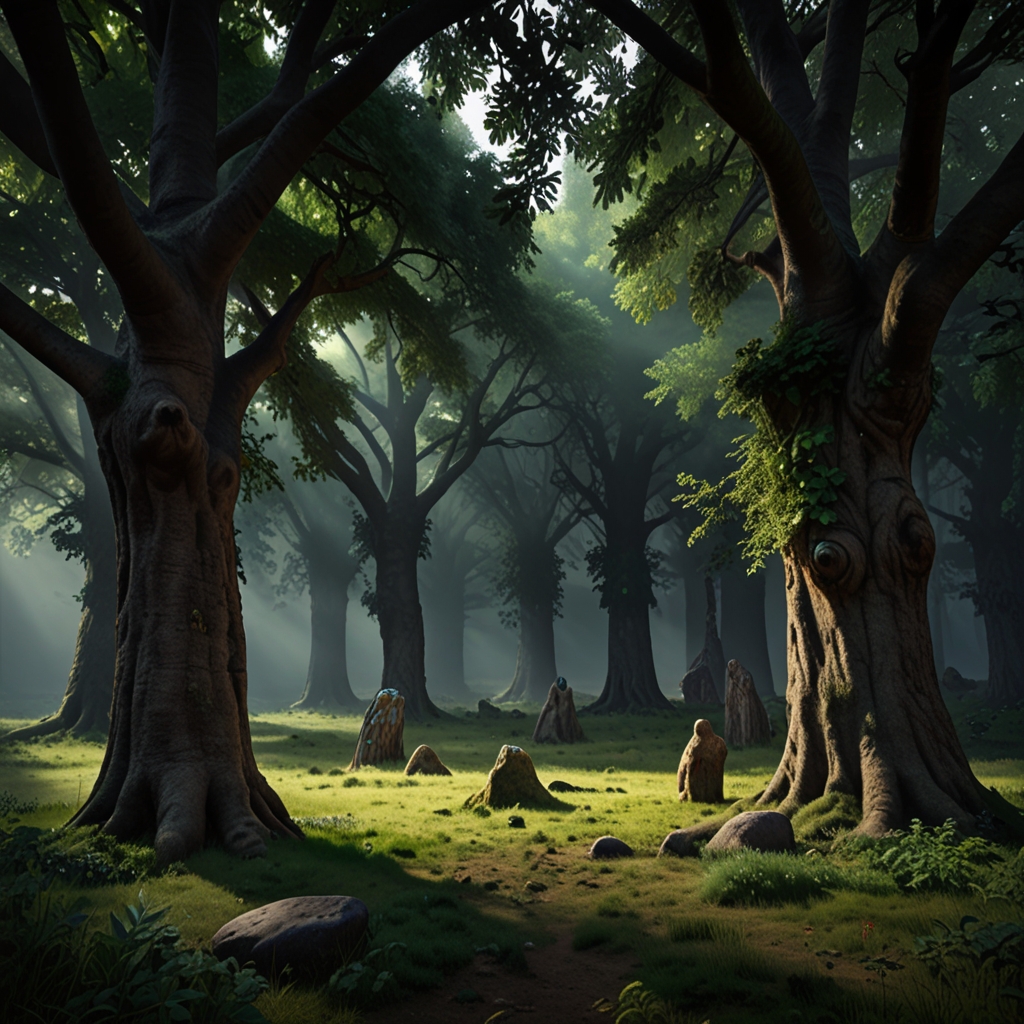
Returning to England, we delve into Dering Wood, also known as the Screaming Woods of Kent. Nestled near the village of Pluckley, reputedly England’s most haunted village, Dering Wood has earned its chilling moniker due to the eerie screams and whispers that are said to emanate from its depths at night. This ancient woodland, with its gnarled trees and shadowy paths, is steeped in legends and ghostly tales that add to its reputation as a place of mystery and foreboding.
The most notorious aspect of Dering Wood is the unsettling sounds that give the forest its other name, the Screaming Woods. Visitors and locals alike have reported hearing blood-curdling screams, disembodied voices, and whispering that seem to come from the very trees themselves. These sounds are most often heard at night, creating a spine-tingling atmosphere that has made the forest a popular spot for paranormal enthusiasts. Some believe these eerie noises are the cries of lost souls trapped within the woods, unable to find peace.
One of the most enduring legends associated with Dering Wood is that of the ghostly soldiers from the Battle of Britain. During World War II, the area around Pluckley and Dering Wood saw significant military activity, including skirmishes and air battles. It is said that the spirits of soldiers who perished in these conflicts now haunt the woods, their restless spirits wandering the forest in search of solace. Sightings of ghostly figures in military uniforms, often accompanied by the sound of distant gunfire or aircraft, are frequently reported by those brave enough to venture into the woods after dark.
The forest’s haunted reputation is further bolstered by tales of other spectral encounters. One such story is that of the “Hanged Man,” a ghostly figure said to be the spirit of a man who took his own life in the woods. According to legend, his tormented soul can be seen hanging from the trees, a tragic reminder of his untimely death. Another haunting figure is that of a mysterious lady in white, who is often seen gliding silently among the trees, her presence accompanied by a profound sense of sadness and loss.
Adding to the forest’s aura of mystery are the numerous reports of unexplained phenomena. Visitors have described sudden drops in temperature, feelings of being watched, and strange lights that appear and disappear without explanation. Some have experienced a sense of disorientation or even physical unease, as if an unseen force is affecting them. These experiences have led many to believe that Dering Wood is a hotspot for paranormal activity, a place where the veil between the living and the dead is particularly thin.
The dense, ancient trees of Dering Wood, with their twisted branches and thick undergrowth, create a setting that is both beautiful and eerie. The forest’s natural beauty during the day contrasts sharply with its menacing atmosphere at night, when the shadows lengthen and the haunting sounds begin. The isolation and seclusion of the woods only add to the sense of stepping into another world, a place where the past lingers and the supernatural feels palpable.
Dering Wood, the Screaming Woods of Kent, stands as a testament to the enduring power of legend and the allure of the supernatural. Its haunted reputation, fueled by tales of ghostly soldiers, spectral figures, and unexplained screams, creates a place where mystery and fear intertwine. For those intrigued by the paranormal, Dering Wood offers an experience that is as thrilling as it is unsettling, a journey into the heart of England’s haunted heritage
The Dark Hedges, Northern Ireland: A Ghostly Avenue of Legends
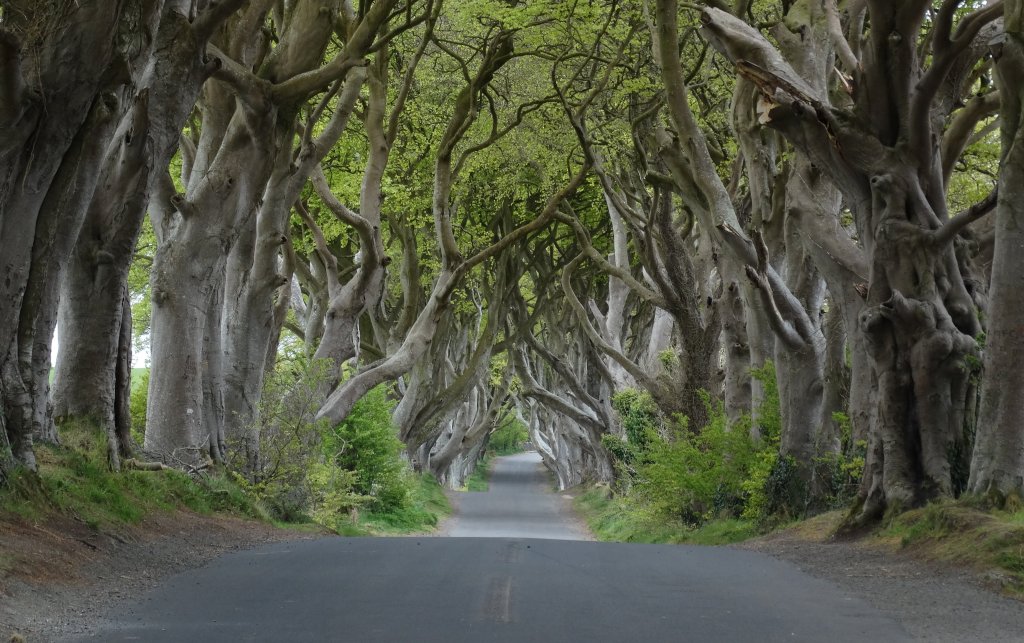
Our journey takes us back to Northern Ireland, where the Dark Hedges beckon with their ghostly allure. This enchanting avenue of beech trees, located near the village of Armoy in County Antrim, has become a renowned destination not only for its natural beauty but also for its supernatural intrigue. Made famous by its appearance in the television series “Game of Thrones,” the Dark Hedges offer a hauntingly beautiful landscape that draws visitors from around the world. However, it is the eerie legends associated with this place that add an extra layer of fascination.
The Dark Hedges were planted by the Stuart family in the 18th century as an impressive entrance to their Georgian mansion, Gracehill House. Over the centuries, the beech trees grew and intertwined, creating a natural archway that has come to be known as one of the most photographed natural phenomena in Northern Ireland. The canopy of trees forms a tunnel-like avenue, casting dramatic shadows and creating an ethereal atmosphere that captivates all who visit.
Amidst this breathtaking beauty, the legend of the Grey Lady adds a chilling element to the Dark Hedges. According to local folklore, the Grey Lady is the ghostly figure of a young woman who haunts the avenue. She is often described as a spectral figure dressed in a long, grey cloak, gliding silently among the trees, particularly on moonlit nights. Some believe she is the spirit of a maid from nearby Gracehill House who died under mysterious circumstances, while others think she is a member of the Stuart family, forever bound to the place she once called home. Her presence is said to bring a sense of calm and melancholy, as if she is watching over the land.
Visitors to the Dark Hedges have reported various paranormal encounters, from sightings of the Grey Lady herself to feelings of being watched or followed. The avenue’s secluded location and the natural play of light and shadow through the trees enhance these experiences, creating an environment ripe for ghostly legends. The rustling of leaves in the wind and the occasional unexplained sound only add to the sense that the Dark Hedges are more than just a picturesque spot.
In addition to the legend of the Grey Lady, the Dark Hedges are steeped in other ghostly tales. Some visitors have reported hearing whispers or soft voices, as if spirits from the past are conversing among the trees. Others have felt sudden drops in temperature or have seen strange lights flickering in the distance. These experiences have cemented the Dark Hedges’ reputation as a place where the veil between the living and the dead is thin, and where history and legend merge seamlessly.
The Dark Hedges’ fame was further amplified by its use as a filming location for “Game of Thrones,” where it served as the Kingsroad. This exposure brought global attention to the site, attracting fans of the show alongside those drawn by its natural beauty and haunted reputation. Despite the increased foot traffic, the Dark Hedges retain their mystical charm, continuing to inspire awe and wonder.
The Dark Hedges of Northern Ireland stand as a ghostly avenue of legends, where natural beauty intertwines with supernatural intrigue. The haunting presence of the Grey Lady, coupled with the avenue’s dramatic and ethereal atmosphere, creates a destination that is both enchanting and eerie. For those who visit, the Dark Hedges offer a unique experience, inviting them into a world where legends come to life and the past lingers in the shadows of ancient trees.
The Pine Barrens, New Jersey, USA: Home of the Jersey Devil
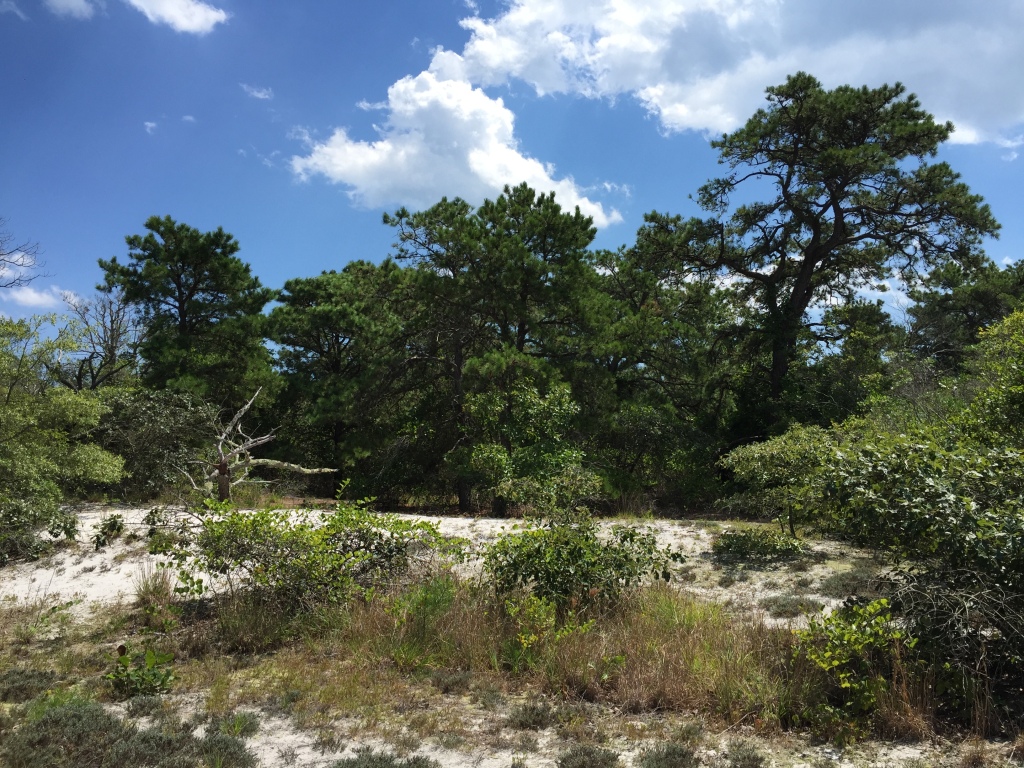
Across the Atlantic, we arrive in the Pine Barrens of New Jersey, USA, a sprawling expanse of forested land that is steeped in folklore and mystery. Covering over one million acres across seven counties, the Pine Barrens is a unique and rugged landscape, characterized by its dense forests, sandy soil, and numerous bogs and swamps. However, what truly sets the Pine Barrens apart is its infamous legend—the tale of the Jersey Devil.
The legend of the Jersey Devil dates back to the early 18th century. According to folklore, the creature was born to Deborah Leeds, a resident of the Pine Barrens, in 1735. As the story goes, when Mrs. Leeds discovered she was pregnant with her thirteenth child, she cursed the unborn baby in frustration, exclaiming, “Let this one be a devil!” On the night the child was born, it transformed into a terrifying creature with leathery wings, a goat-like head, horns, claws, and a tail. The beast let out a blood-curdling scream and flew up the chimney, disappearing into the Pine Barrens, where it has reportedly roamed ever since.
Sightings of the Jersey Devil have been reported for centuries, with numerous accounts of encounters with the creature. Witnesses describe seeing a bizarre, winged animal that moves swiftly through the trees, often accompanied by eerie screeches and cries. The Pine Barrens’ dense and remote terrain provides the perfect hiding place for the Jersey Devil, making it all the more elusive and mysterious.
In addition to sightings of the Jersey Devil, the Pine Barrens are known for other strange and unexplained phenomena. Visitors and locals have reported seeing mysterious lights, sometimes referred to as “spook lights” or “ghost lights,” floating through the forest at night. These lights are often seen moving in erratic patterns, disappearing and reappearing without explanation. Some believe these lights are the restless spirits of those who perished in the harsh conditions of the Pine Barrens, while others think they are related to the presence of the Jersey Devil itself.
The Pine Barrens are also home to a number of ghost towns and abandoned settlements, remnants of the area’s industrial past. These deserted places add to the eerie atmosphere, with crumbling buildings and overgrown paths creating a sense of stepping back in time. The ruins of old iron furnaces, paper mills, and glass factories can still be found hidden among the trees, silent witnesses to a bygone era. Stories of ghostly apparitions and unexplained sounds in these locations further enhance the Pine Barrens’ reputation as a realm of the supernatural.
Explorers and paranormal enthusiasts who venture into the Pine Barrens often describe feelings of unease and being watched. The forest’s thick canopy and labyrinthine paths can easily disorient even the most experienced hikers, adding to the sense of isolation and vulnerability. The Pine Barrens’ unique ecosystem, with its rare and endangered plant and animal species, only adds to the otherworldly feel of the place.
Despite its haunted reputation, the Pine Barrens is also a place of remarkable natural beauty and ecological significance. The area is home to the Wharton State Forest, the largest state forest in New Jersey, and the Jacques Cousteau National Estuarine Research Reserve. Visitors can explore miles of hiking trails, paddle along scenic rivers, and enjoy the diverse wildlife that inhabits this vast wilderness.
The Pine Barrens of New Jersey, with its legend of the Jersey Devil and reports of supernatural phenomena, stands as a captivating destination for those intrigued by folklore and the unexplained. The forest’s haunting beauty, combined with its eerie legends and mysterious sightings, creates a place where the line between reality and myth blurs, inviting visitors to explore its secrets and uncover its dark tales.
Hockomock Swamp, Massachusetts, USA: The Bridgewater Triangle’s Mysteries
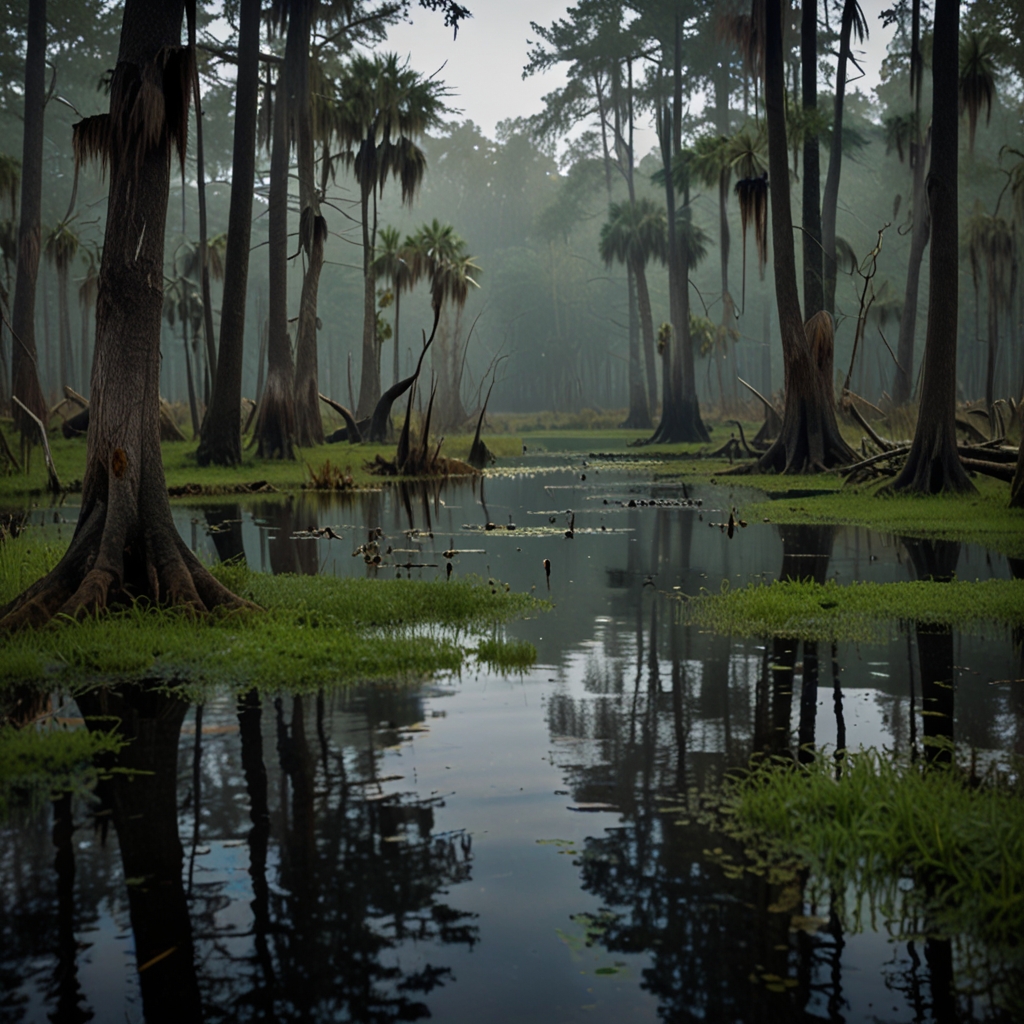
Venturing further into the United States, we encounter Hockomock Swamp in Massachusetts, a key area within the infamous Bridgewater Triangle. Spanning over 16,000 acres, Hockomock Swamp is a vast, murky wetland that has earned a reputation as one of the most haunted and mysterious places in America. The Bridgewater Triangle, an area roughly bounded by the towns of Abington, Rehoboth, and Freetown, is renowned for its high concentration of paranormal activity, and Hockomock Swamp sits at its heart.
Hockomock Swamp, whose name means “place where spirits dwell” in the Algonquin language, has been steeped in legend and mystery for centuries. Native American tribes once used the swamp as a sacred place for hunting and burial, and they believed it was inhabited by powerful spirits. These ancient beliefs continue to influence the stories and sightings reported by modern visitors.
One of the most famous legends associated with Hockomock Swamp is that of the Pukwudgies—small, troll-like creatures from Wampanoag folklore. These mischievous beings are said to inhabit the swamp, playing tricks on those who venture too close to their territory. Some stories even describe Pukwudgies as malevolent, capable of leading people astray or causing harm. Sightings of these creatures continue to be reported, adding a mythical layer to the swamp’s already eerie reputation.
Hockomock Swamp is also a hotspot for UFO sightings. Since the 1970s, there have been numerous reports of strange lights in the sky, hovering above the swamp or moving erratically through the night. Witnesses describe these lights as bright, colorful, and often accompanied by a feeling of unease or disorientation. Some believe that the swamp’s unique geological and environmental features may attract or amplify such phenomena, while others speculate that the area serves as a portal for extraterrestrial visitors.
Bigfoot sightings are another intriguing aspect of Hockomock Swamp’s mysteries. Over the years, several people have claimed to encounter large, hairy, humanoid creatures within the swamp. These sightings are often accompanied by other strange occurrences, such as unexplained noises, strong odors, and unusual footprints. The dense, remote nature of the swamp makes it an ideal hiding place for such a creature, fueling speculation and investigation by cryptozoologists and enthusiasts.
Ghostly apparitions and unexplained phenomena further contribute to the swamp’s haunted reputation. Visitors have reported seeing spectral figures, hearing disembodied voices, and experiencing sudden drops in temperature. One particularly famous ghost is that of a Native American warrior, often seen standing guard or wandering the swamp’s periphery. These ghostly encounters are often fleeting but leave a lasting impression on those who witness them.
The Bridgewater Triangle’s reputation for high strangeness extends beyond Hockomock Swamp, encompassing various other sites of interest such as the Dighton Rock, the Freetown-Fall River State Forest, and the Taunton State Hospital. However, Hockomock Swamp remains the focal point, drawing paranormal investigators, researchers, and curious visitors from all over the world. The swamp’s thick vegetation, treacherous terrain, and pervasive sense of isolation create a setting that is both beautiful and foreboding.
Hockomock Swamp in Massachusetts is a place where natural beauty and supernatural intrigue converge. As a key location within the Bridgewater Triangle, it offers a rich tapestry of legends, sightings, and unexplained phenomena. Whether you are drawn by the tales of Pukwudgies, the allure of UFO sightings, or the whispers of ghostly apparitions, Hockomock Swamp invites you to explore its mysteries and experience the eerie allure of one of America’s most enigmatic landscapes.
Brijuni National Park, Croatia: Haunted History on Brijuni Island
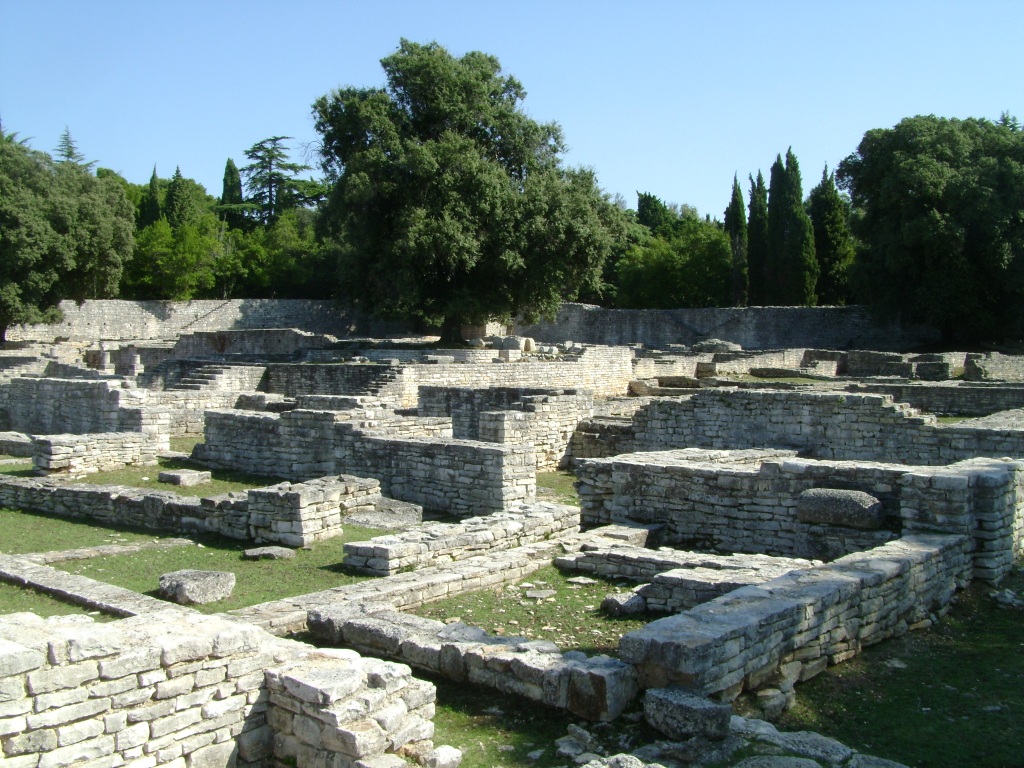
Our journey takes us to Croatia’s Brijuni National Park, a stunning archipelago in the Adriatic Sea that blends natural beauty with a haunting history. At the heart of this park lies Brijuni Island, a place where ancient ruins, scenic landscapes, and whispers of the past create an atmosphere of mystery and intrigue.
Brijuni Island has a rich and varied history that dates back thousands of years. In ancient times, it was inhabited by Illyrian tribes and later became a Roman settlement, leaving behind traces of ancient architecture and artifacts that still dot the island’s landscape. However, it is the more recent history of Brijuni Island that adds a haunting layer to its allure.
One of the most enduring legends associated with Brijuni Island is that of the drowned girl’s ghost. According to local folklore, a young girl tragically drowned off the shores of the island many years ago. Her spirit is said to linger near the water’s edge, appearing as a spectral figure on moonlit nights. Witnesses describe seeing a translucent figure walking along the shoreline or gazing out to sea, her presence accompanied by a sense of sadness and longing. The tale of the drowned girl’s ghost has been passed down through generations, adding to the island’s reputation as a place where the past lingers.
In addition to the legend of the drowned girl, Brijuni Island is also home to eerie apparitions and unexplained phenomena. Visitors and residents alike have reported seeing shadowy figures among the ancient ruins, hearing disembodied voices echoing through the trees, and experiencing inexplicable cold spots in certain areas of the island. These ghostly encounters are often fleeting but leave a lasting impression on those who experience them.
The island’s haunted history is further enhanced by its role as a former summer residence of Marshal Tito, the leader of Yugoslavia during the Cold War era. Tito’s presence looms large over Brijuni Island, with his former residence, now a museum, offering a glimpse into the life of one of Europe’s most enigmatic leaders. The juxtaposition of ancient ruins, Tito’s legacy, and ghostly legends creates a unique blend of history and mystery that sets Brijuni Island apart.
Despite its haunted reputation, Brijuni Island is also a haven for nature lovers and history enthusiasts. The island’s national park status has preserved its diverse flora and fauna, including rare plant species and abundant wildlife. Visitors can explore the island’s rugged coastline, pristine beaches, and lush forests, immersing themselves in the natural beauty that coexists with its haunted past.
Brijuni National Park in Croatia offers a captivating blend of natural beauty and haunted history on Brijuni Island. From ancient ruins to ghostly legends, the island invites visitors to delve into its mysteries and uncover the whispers of the past. Whether you are drawn by the allure of ghost stories, the intrigue of historical sites, or the serenity of nature, Brijuni Island promises a memorable and haunting experience that lingers long after you leave its shores.
Wychwood Forest, England: Tales of Ghostly Monks and Mysteries
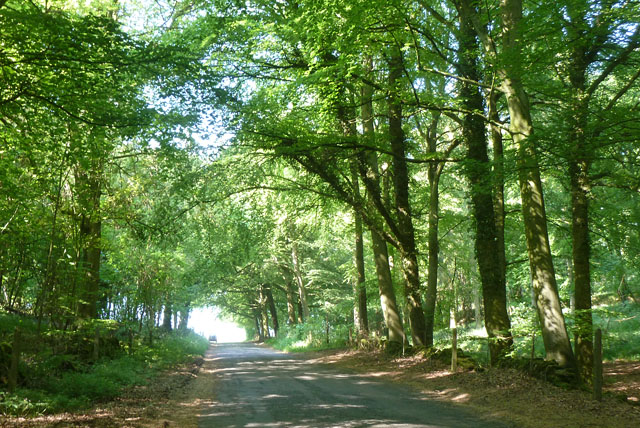
Our final stop brings us back to England, where Wychwood Forest beckons with its tales of ghostly monks and ancient mysteries. Nestled in the heart of the Cotswolds, Wychwood Forest is a place where folklore and reality blur, weaving a tapestry of haunting tales that echo through the ages. From spectral huntsmen to eerie lights that dance among the trees, Wychwood Forest is steeped in supernatural intrigue and mysterious encounters.
One of the most enduring legends associated with Wychwood Forest is that of the ghostly monks. According to local folklore, the forest was once home to a monastery inhabited by monks who lived a secluded and devout life. However, tragedy struck when the monastery was destroyed, possibly during the dissolution of the monasteries in the 16th century. Since then, sightings of ghostly monks have been reported by visitors and residents alike. These spectral figures are often seen walking among the trees, their robes billowing in the wind, or kneeling in silent prayer as if eternally bound to the place they once called home.
In addition to the ghostly monks, Wychwood Forest is known for encounters with otherworldly beings. Tales of fairy sightings, where ethereal lights and enchanting music draw travelers deeper into the forest, are common in local folklore. Some believe that the ancient oaks and secluded glades of Wychwood are portals to the realm of fae, where creatures of myth and magic dwell. These encounters blur the lines between reality and fantasy, adding to the forest’s mystical allure.
Eerie lights that dance among the trees have also been reported in Wychwood Forest. Known as will-o’-the-wisps or ghost lights, these mysterious phenomena are often seen at night, flickering and darting through the darkness. Folklore warns that those who follow these lights may become lost or led astray, as they are said to be illusions created by mischievous spirits. The glowing orbs of light add an ethereal and otherworldly element to the forest’s already haunting atmosphere.
Wychwood Forest is also associated with spectral huntsmen, phantom riders who gallop through the night sky on ghostly steeds. The sound of hoofbeats and the echoing cry of hunting horns are said to herald their approach, striking fear into the hearts of those who hear them. Some tales suggest that these spectral huntsmen are the restless souls of long-dead nobles or warriors, forever doomed to chase their quarry through the shadowy depths of the forest.
Despite its eerie reputation, Wychwood Forest is also a place of natural beauty and biodiversity. The forest is home to a diverse range of plant and animal species, including ancient oaks, rare butterflies, and elusive deer. Its tranquil glades and winding pathways invite visitors to explore its mysteries while enjoying the peace and serenity of nature.
Wychwood Forest in England is a place where tales of ghostly monks, fairy encounters, eerie lights, and spectral huntsmen intertwine to create a tapestry of haunting legends. Whether you are drawn by the allure of supernatural tales or the beauty of nature, Wychwood Forest offers a journey into the realm of myth and mystery, where the whispers of the past echo through the ancient trees.
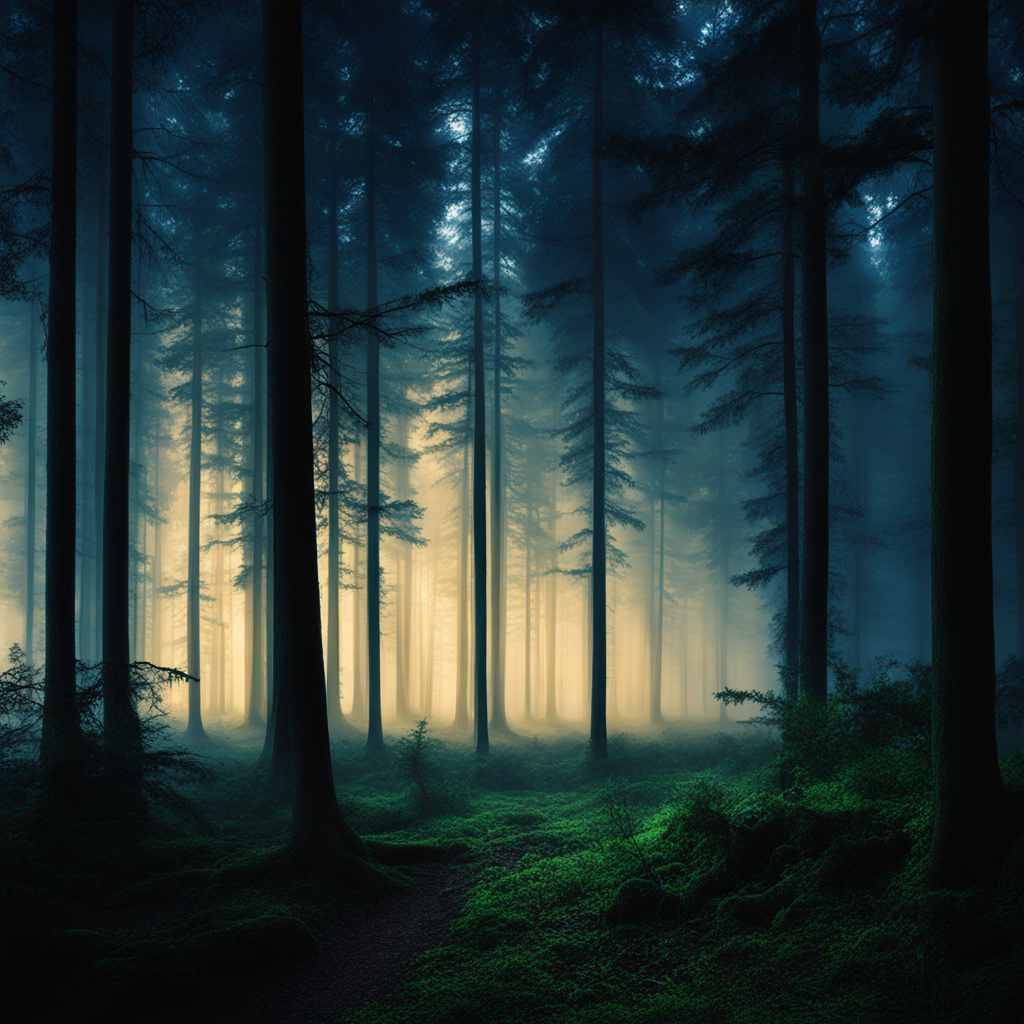
As we conclude our journey through these haunted forests, we are reminded that the natural world holds secrets that defy explanation and stir the imagination. From Japan to England, and across continents, these enigmatic woodlands continue to captivate and intrigue, inviting us to delve deeper into the realms of the supernatural and the unknown.
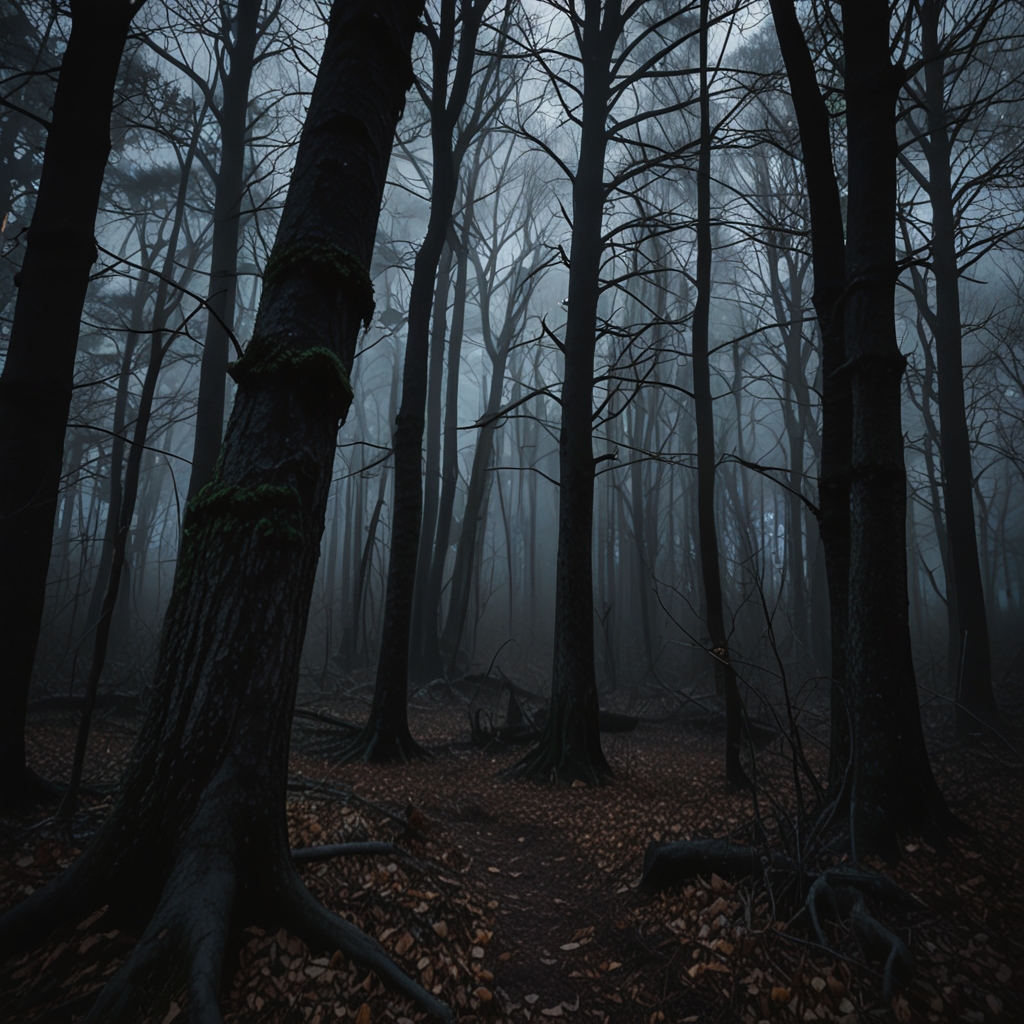

Leave a comment